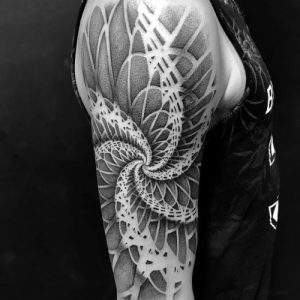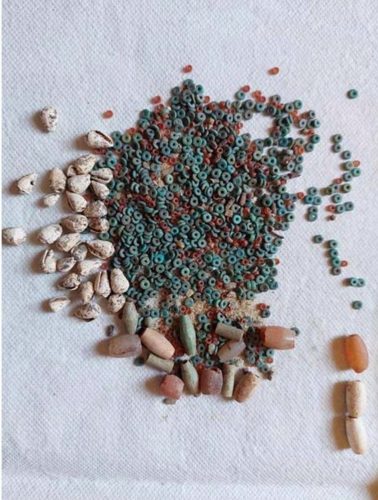
In the heart of Egypt, between the bustling metropolises of Cairo and Aswan, lies a hidden treasure trove of historical significance – the Meir archaeological site in Qusiya. This enigmatic site, recently excavated by dedicated archaeologists, has unveiled a mesmerizing array of ancient artifacts that offer a captivating glimpse into the customs and culture of an ancient civilization that once thrived in this region. From coffins containing skeletal remains to exquisite jewelry, pottery, and copper mirrors, the discoveries at Meir are rewriting the history books.
Meir: A Window into Egypt’s Past
Dr. Mustafa Waziri, the Secretary-General of the Supreme Council for Archaeology, has emphasized the immense historical significance of Meir as an Old Kingdom–Middle Kingdom cemetery for the ancient city of Cusae. Cusae was a prominent center for the worship of Hathor, a revered Egyptian deity associated with music, dance, and fertility. Meir, nestled within this sacred landscape, has yielded astonishing findings that shed light on the rituals, beliefs, and daily life of the people who once called this region home.
Rock-Cut Tombs and Prayers in Coptic Script
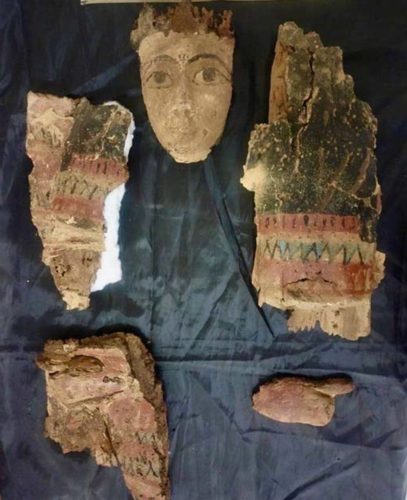
Among the most remarkable discoveries at Meir are the rock-cut tombs that have been meticulously unearthed by archaeologists. These tombs, carved into the natural rock formations of the area, serve as a testament to the craftsmanship and dedication of the ancient Egyptians. Inside these tombs, prayers inscribed in Coptic script have been found, providing valuable insights into the spiritual practices and religious beliefs of the people who were laid to rest here. These inscriptions are a precious link to the past, offering a glimpse into the minds and hearts of those who lived in this ancient city.
Evidence of Storage Areas, Shelves, and Manuscripts
The excavation of Meir has also revealed evidence of storage areas and shelves within the ancient structures. This suggests that the inhabitants of Cusae were not only skilled in religious and funerary practices but also in the organization and preservation of their belongings. Manuscripts found among these storage areas hint at a society that valued knowledge and the written word. These manuscripts could potentially contain invaluable information about the culture, history, and daily life of the people of Cusae.
Pottery and Engagement Beads: Clues to Funerary Customs
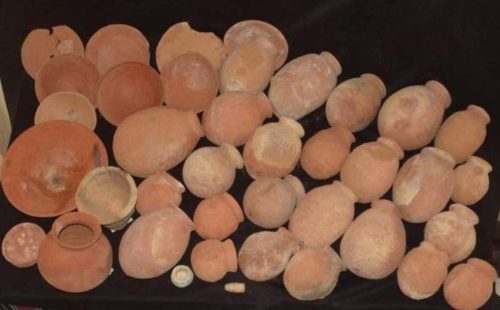
One of the most intriguing aspects of the Meir excavation is the diverse pottery that has been unearthed. These ancient ceramics come in a variety of shapes, sizes, and designs, offering clues about the artistic sensibilities of the time. Additionally, the discovery of engagement beads indicates that jewelry played a significant role in the funerary customs of the region. These beads are not only beautiful but also symbolize the importance of personal adornment and perhaps the belief in an afterlife.
Copper Mirrors: Reflections of a Bygone Era
Among the treasures uncovered at Meir are two copper mirrors. These mirrors, finely crafted and remarkably preserved, give us a unique opportunity to see the reflection of a society that existed thousands of years ago. They speak to the importance of personal grooming and appearance in ancient Egyptian culture. The mirrors may have played a role in the rituals surrounding the deceased, further highlighting the intricate customs that surrounded death and the afterlife.
Conclusion
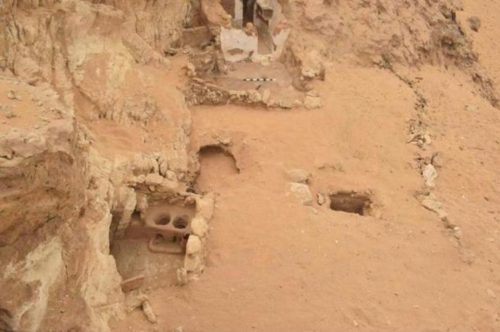
The Meir archaeological site in Qusiya, Egypt, is a testament to the enduring fascination of archaeology and the power it has to reveal the secrets of the past. The discoveries made at Meir, including coffins with skeletal remains, inscribed prayers, pottery, engagement beads, and copper mirrors, provide an invaluable glimpse into the customs and culture of a bygone civilization. As we continue to unearth and study these ancient treasures, we gain a deeper understanding of Egypt’s rich cultural heritage and the lives of its people who lived and thrived thousands of years ago.
The Meir excavation stands as a reminder that beneath the sands of time, there are stories waiting to be told, and treasures waiting to be unveiled. It is through the dedication and passion of archaeologists that we can bridge the gap between our modern world and the mysteries of ancient civilizations like that of Cusae, bringing their legacy to light for generations to come.
Image Source: Egypt’s Ministry of Tourism and Antiquities.





